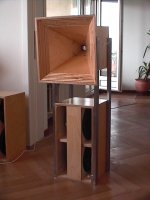Based on S16 protoype I did in 2010, I'm now commissioning this one for a research project.
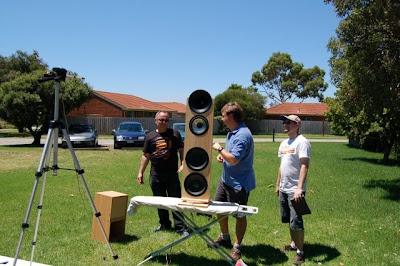
Details to follow as they go.
This is is my first speaker build after almost two years.
gainphile.blogspot.com.au/2015/01/r16-constant-directivity-loudspeakers.html
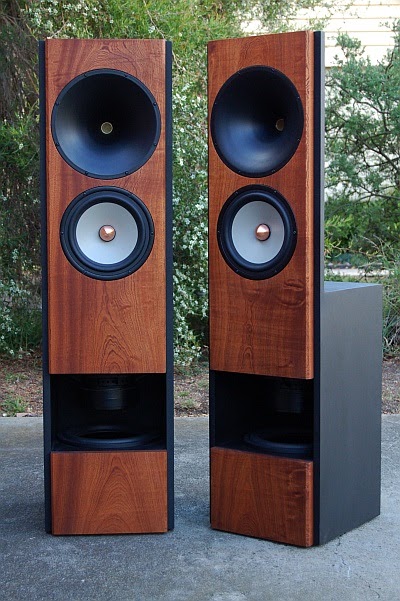

They will be dipoles up to 1.5khz and the forward directivity goal should be very similar to the prototype.
I've had mixed feelings about rear-firing tweeters.
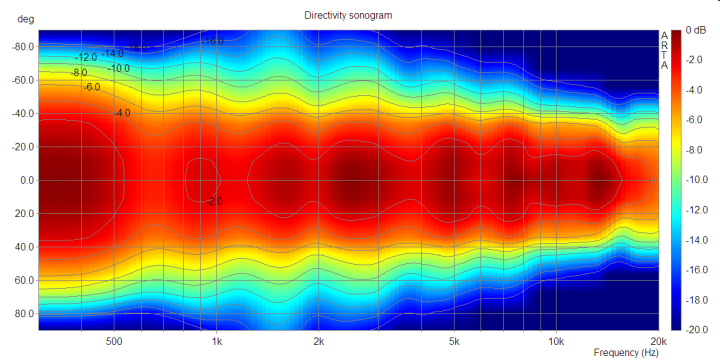

Details to follow as they go.
This is is my first speaker build after almost two years.
gainphile.blogspot.com.au/2015/01/r16-constant-directivity-loudspeakers.html


They will be dipoles up to 1.5khz and the forward directivity goal should be very similar to the prototype.
I've had mixed feelings about rear-firing tweeters.

Dipole bass, dipole mid, forward-radiating highs... What's the rationale behind it?
Controlled Directivity I would think. Both proper implemented dipoles and waveguides accomplish this, but through different methods.
Dipole bass, dipole mid, forward-radiating highs... What's the rationale behind it?
Obviously I cannot comment on gainphile's rationale, but I can state my own reason: backwards radiation >2kHz is a pain in the butt when speakers are less than 1m from the front wall.
Initially, my dipoles were dipoles all the way, including highs - at first with back-to-back tweeters, then planar dipole. All nice and controlled and even power response and all that, until one day I've discovered that imaging improves A LOT if backwards radiation is rolled off (not necessarily suppressed) above 2kHz such that to avoid a big primary reflection off the front wall in that range. The rest can stay dipole. I have no good explanation why this is so, one hint being this kind of reflection being very specular.
If you have plenty of space behind the speakers, this is likely not to be an issue. But not all of us have. You might - or might not - be able to address it using diffusers/absorbers, but treating it at the source is also an option.
Last edited:
Turning dipoles 30-45¤ in helps with front-wall reflections. Alas they should sit a little wider than conventionals, often on the long wall.
Linkwitz says that reflections coming in less that 6ms should be eliminated, that means 1m to front-wall (shortest reflection path, means 2m longer path than direct radiation)
AS_creation
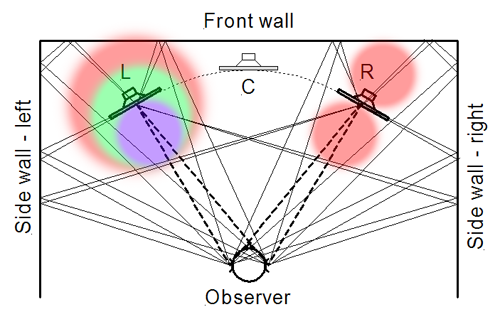
Linkwitz says that reflections coming in less that 6ms should be eliminated, that means 1m to front-wall (shortest reflection path, means 2m longer path than direct radiation)
AS_creation

Last edited:
Turning dipoles 30-45¤ in helps with front-wall reflections. Alas they should sit a little wider than conventionals, often on the long wall.
Linkwitz says that reflections coming in less that 6ms should be eliminated, that means 1m to front-wall (shortest reflection path, means 2m longer path than direct radiation)
AS_creation

Now that is almost regarded as common wisdom and I certainly don't intend to contradict it.
However, I do not have 1m. And below 1m there seems to be a frequency-dependent effect that makes the lower frequencies reflections okay-ish (from an imaging point of view) while high-frequency reflections are much more disturbing. Perhaps it's Haas effect related (don't remember if Haas effect is frequency-dependent though). Also, toe-in does not help as much when the distance to front wall is small.
I'll recheck Toole on this. I vaguely remember he's stating that early reflections actually increase ASW (apparent source width) but I also no longer remember if that is frequency-dependent.
My 'rationale' at that time was 90° dispersion of the waveguide could produce a very smooth transition to 120°, given a correct crossover frequency. That showed in the sonogram. Of course this is for forward projection only.
They should make some music tonight if I'm lucky 🙂
They should make some music tonight if I'm lucky 🙂
Controlled Directivity and Directivity Index. For home audio, horns are often selected because they control the directivity pattern and remove undesirable room reflections. There is good science supporting using a dipole woofer mated to a wide bandwidth horn when a bass horn with good pattern control is too large. The directivity index of the dipole woofer (DI=4.77) is closer to the DI of the horn than the DI=1 of a box woofer. The Unity/Synergy horn has the wide bandwidth to partner up with a dipole woofer.
I found an old photo. Probably a 200Hz Xover to the counter-force dipole pair.
I found an old photo. Probably a 200Hz Xover to the counter-force dipole pair.
Attachments
If matching directivity is what this is about, then I'd rather combine a waveguide and a cardioid.
Perhaps slightly off-topic, but still relevant to the discussion.
Found some support for my finding above (if distance to front wall is small, backward radiation should have rolled-off or suppressed highs) related to the Haas effect:
Precedence effect - Wikipedia, the free encyclopedia
"A reflection with attenuated higher frequencies expands the time span that echo suppression is active"
Found some support for my finding above (if distance to front wall is small, backward radiation should have rolled-off or suppressed highs) related to the Haas effect:
Precedence effect - Wikipedia, the free encyclopedia
"A reflection with attenuated higher frequencies expands the time span that echo suppression is active"
If matching directivity is what this is about, then I'd rather combine a waveguide and a cardioid.
Yes, this can be done to albeit more complex. It also did not result in a perfect Cardioid.
www.diyaudio.com/forums/multi-way/261329-s23-4-way-active-cardioid-loudspeakers.html
Nothing wrong with a good dipole, but I would go for either full-dipole, or full-cardioid. It takes some effort, but you can actually get pretty good results with a resistance box. You probably already know the website, but for those who dont, have a look at: DIY archive of Kimmo Saunisto
Out of curiosity, what would be your rationale for that ?Nothing wrong with a good dipole, but I would go for either full-dipole, or full-cardioid.
I'm asking because over time I came to the conclusion that "full-XXX" is not necessarily the best solution - except maybe for "purist" people that just want the same solution end-to-end for the sake of it.
Looking at the different frequency ranges - we're talking acoustically small room here - I see is this way:
- very low bass: best covered by (multiple) subs. Not much of a point of making a cardioid here (in a small room, there would be none anyway)
- bass, say 40-80 Hz: taste plays a role here. Some (including myself) enjoy the more "airy", but less impactful dipole presentation. Monopole has lots of slam, but loses the subjective "floating" quality of dipole. Cardioid is somewhat in between.
- midbass: cardioid has a net advantage in avoiding reflections off the front wall.
- low/high midrange: Dipoles are more "spacious", while cardioids could be more accurate due to lack of reflection. I prefer dipoles.
- highs: IMHO, no point in symmetrical backwards radiation, especially if you're close to the front wall. Controlled directivity is more important. I'd make it pseudo-cardioid by gradually rolling off the backwards radiation.
It can be largely a matter of preference - and room ! - and honestly don't see why one should restrict to either full dipole or full cardioid or full whatever.
Out of curiosity, what would be your rationale for that ?
I'm asking because over time I came to the conclusion that "full-XXX" is not necessarily the best solution - except maybe for "purist" people that just want the same solution end-to-end for the sake of it.
It can be largely a matter of preference - and room ! - and honestly don't see why one should restrict to either full dipole or full cardioid or full whatever.
Best post in a long time, no matter regarding sound quality or life style😉
Peter Pan
Dipole midrange and cardioid-like highs do not result in constant directivity. Most builders who pursue constant directivity try to obtain this at least for frequencies upwards of 1 kHz.
Last edited:
gainphile, do you find this design to be umprovement over the one with small cone midrange and DXt tweeter?
This one is actually an earlier design. Yes I like it quite much!
Placing the speakers outside and listen around it is quite revealing:
http://youtu.be/SWaT_zMaBik
Placing the speakers outside and listen around it is quite revealing:
http://youtu.be/SWaT_zMaBik
what's the M/T crossover point/topology? Have you tried altering it to see the effect of polar plot broadening around 1.2Khz?
- Status
- Not open for further replies.
- Home
- Loudspeakers
- Multi-Way
- R16 constant directivity dipoles
